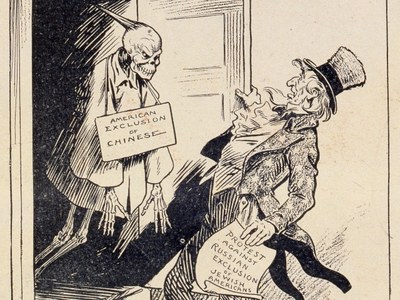A Skeleton in His Closet: Exclusion of Chinese Labourers
erstellt von
—
last modified
2023-07-10T14:07:49+02:00
Library of Congress, public domain
Library of Congress, public domain
Louise Glackens, "A Skeleton in His Closet," in: Puck 70,1818 (Jan 3, 1912), p. 2; source: Library of Congress, LC-USZC2-1043, http://www.loc.gov/pictures/item/2002720339, public domain.

